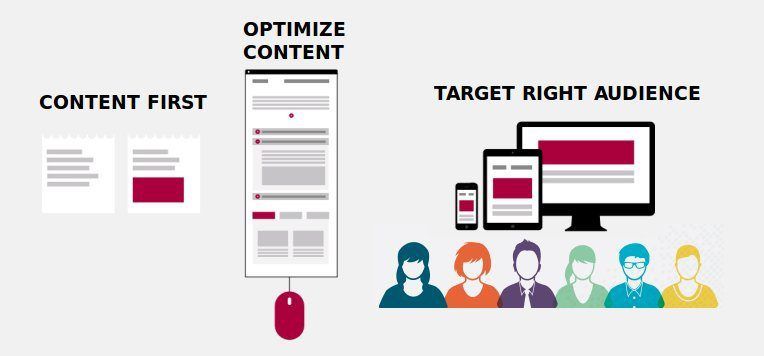What makes for a good user experience (UX) throughout your business model? UX is about more than just your website design, although that is a big part of the equation. How does your business make people feel each time they interact with you? Are your processes simple and intuitive to the customer’s needs?
Studies show there is $1.4 trillion a year lost to bad UX in e-commerce alone. Taking the time to ensure you’re hitting the right touchpoints helps your revenue and ensures you see business growth year after year. If bad UX costs money, good UX should bring in funds.
Learning how to offer an excellent experience to your users isn’t easy. There are some snafus small business owners run into frequently. Knowing what they are and how to overcome them gives you a competitive advantage. Here are the ones we notice most often.
1. Focusing Too Much on One Touchpoint
Businesses must look at UX as the overall impression your business leaves with the user. How much of your UX occurs online depends on your business model. If you run an e-commerce only store, then you’ll focus more on website usability or your app.
On the other hand, if you have a brick-and-mortar location or you offer a service, interactions with your field agents and customer service reps may take center stage. Spend time listing all the ways a user might encounter your brand and how to improve the process for each.
Make sure each time the user encounters your brand, they walk away with an excellent impression of you. Dig down to find weak areas and make them your strengths.
2. Not Understanding How People Use Apps
Most businesses benefit from offering apps to their customers. You can use them for self-scheduling, to push notifications and even for placing orders.
However, about 25% of apps get abandoned after one use. The most likely culprit? Poor UX. Take the time to use the app and look at it through the eyes of your customers. Ask a handful to beta test it and offer input.
3. Confusing UI and UX
User interface (UI) is the layout and function of the page or possible store. UX ties more closely to how the user feels when they finish interacting with you. UX is a bit more complex and involves things such as customer service, how easy it is to find what they’re looking for and how intuitive the design is.
Knowing the difference between the two allows you to hone in on problem areas and fix them. You can also hire the right third-party help to fix any issues you might have.
You can’t force people to have a good experience on your website or in your store. However, you can influence their experience by understanding who your target audience is and coming up with features they need.
4. Putting UX Last
Ideally, the UX of your brand integrates with everything you do. It shouldn’t be the last thing you think of but should run concurrently with other considerations. Always ask how the user will experience any changes.
You can even influence experience via the products you choose to carry, how you segment your mailing list and the color palette you choose for your brand.
5. Ignoring Mobile Responsiveness
According to Statista, 4.28 billion people use their mobile devices to go online, which equals around 90% of people on the internet. Your website must adapt to smaller screen sizes or you risk creating a poor experience for every smartphone user who visits your page.
Take the time to design for both desktop and mobile. Test your site by pulling it up on your own cell phone and ask others to do the same. Is there anything difficult to access? Are forms short and easy to complete? Is the CTA big enough to tap with a thumb?
The better images, text, navigation and other elements adapt to smaller screens, the more positive the UX of your website will be for mobile users.
6. Forgetting to Be Relevant
Some businesses get so caught up in creating beautiful, intuitive sites that they forget they are trying to help people. Dig into the pain point that drives people your way in the first place.
What problem do they want you to solve? It can be as simple as owning a toaster that burns their bread and they want one that doesn’t. The key is to dig down into the pain points and fix them for your customers.
7. Gathering Negative Reviews
Brand perception is a big part of the user experience. Brightlocal found 84% of consumers trust online reviews as much as a recommendation from someone they know. There are times when businesses have missteps.
Perhaps you’ve collected a number of bad reviews. These can impact your customers and the way they view your brand, setting them up to have a bad experience before they land on your website or enter your store.
Spend time fixing any complaints so the perception of your brand is a positive one. If people see a gripe and that you fixed it for the person, they are more likely to assume you’ll help them if they have a problem. Your UX may start before the customer contacts you.
Ask for Feedback
Get feedback from your customers and find out how well your business UX works for them. You can’t fix problems you don’t know about. Make small improvements consistently, and your business’ UX will be on point.
- How to Use Rating Scale Questions in Your UX Research - October 31, 2022
- User Research Bias: How It Hurts Your App and What You Can Do About It - September 28, 2021
- What Your Business Always Gets Wrong When It Comes to UX - August 23, 2021
![]() Give feedback about this article
Give feedback about this article
Were sorry to hear about that, give us a chance to improve.








